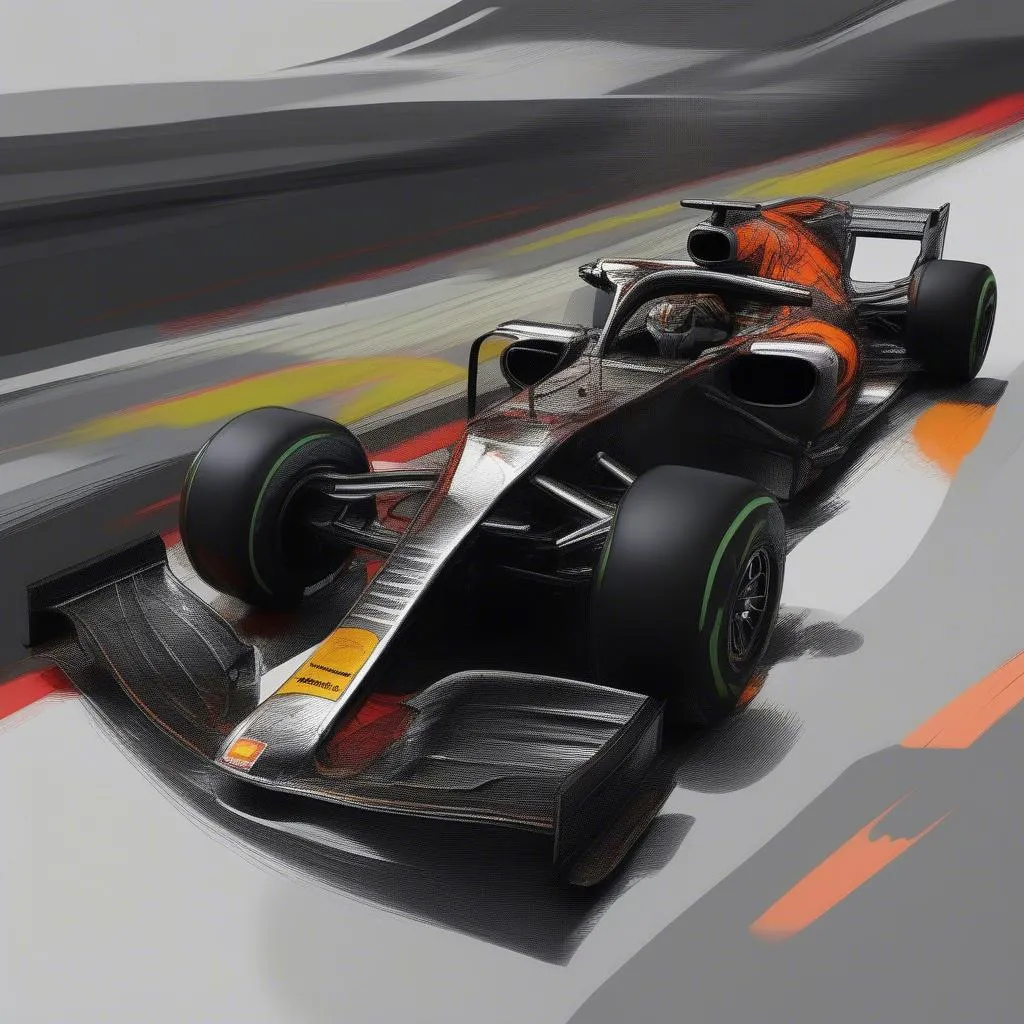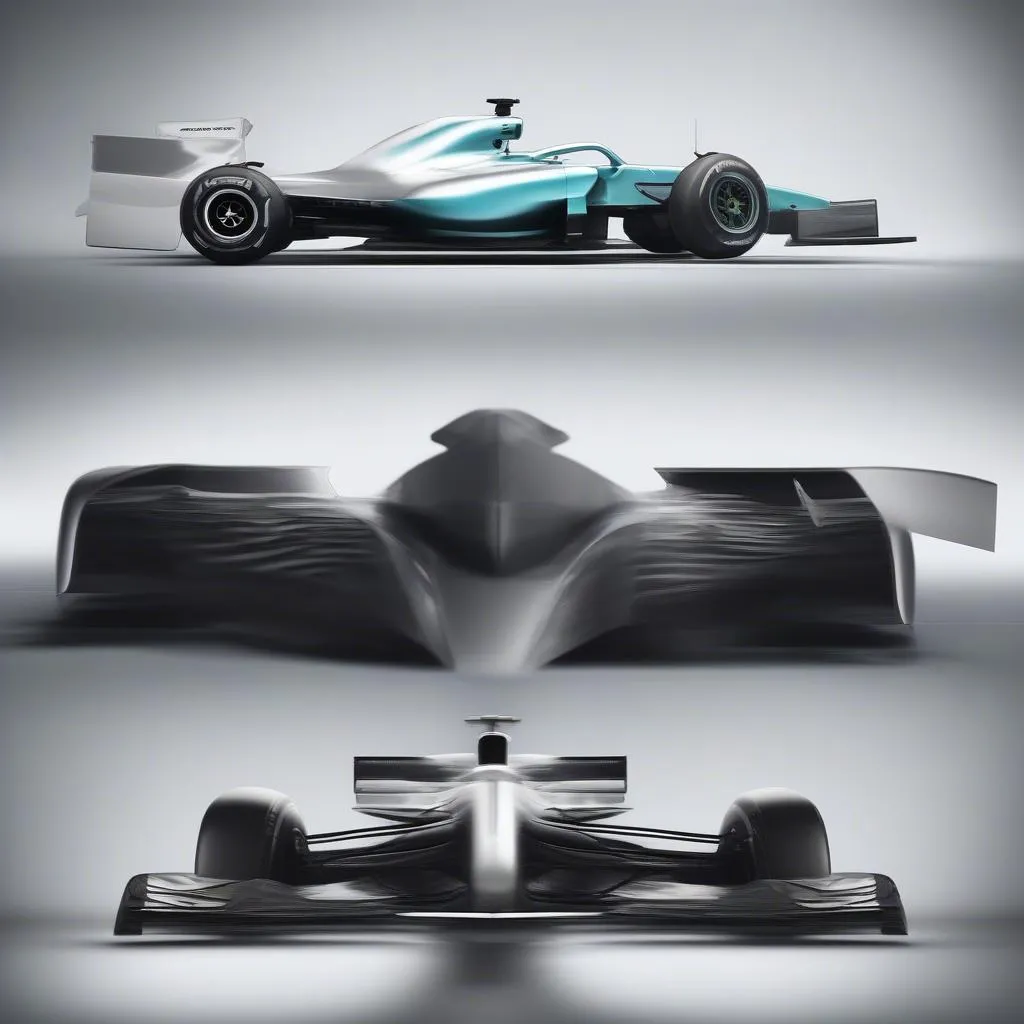Have you ever watched a Formula 1 race and wondered about the intricate details behind these high-performance machines? The sleek design, the powerful engines, the lightning-fast speeds – it’s all captivating! But have you ever wondered about the precise measurements that go into crafting these aerodynamic marvels? Today, we’ll be diving into the world of F1 car blueprints and explore the secrets behind the dimensions that make these racing cars so exceptional.
Understanding the Blueprint of an F1 Car: A Tale of Precision and Innovation
The term “blueprint” in this context refers to the detailed technical drawings that showcase the exact dimensions, shapes, and configurations of an F1 car. These blueprints serve as a crucial guide for engineers, designers, and mechanics involved in the construction and maintenance of these high-performance vehicles. But why is it so important to understand the blueprint?
The Importance of F1 Car Dimensions: Beyond Aesthetics
From a practical standpoint, understanding the blueprint dimensions is vital for several reasons. Firstly, it enables engineers to optimize the car’s aerodynamics. The shape and size of the car’s body, wings, and other components have a direct impact on its ability to cut through the air and generate downforce. This downforce is essential for maintaining grip and stability at high speeds.
The Role of Blueprint Dimensions in F1 Car Performance
Second, the blueprint dimensions play a crucial role in determining the car’s weight distribution. This distribution has a direct impact on the car’s handling and stability. A well-balanced car will offer better cornering performance and stability at high speeds.
Understanding Blueprint Dimensions for Performance Optimization
Third, the blueprint dimensions are essential for ensuring the car’s safety. The car’s safety features, like the driver’s cockpit, the safety barrier surrounding the driver, and the roll cage, are all defined by specific dimensions that ensure the driver’s well-being in case of a crash.
F1 Blueprint Dimensions: Unveiling the Secrets Behind the Speed
The F1 car blueprint is a treasure trove of information, revealing the intricate details behind its performance. Let’s explore some key dimensions that are critical to an F1 car’s success:
1. The Wheelbase: Determining the Car’s Stability and Handling
The wheelbase, which is the distance between the front and rear axles, is a crucial dimension that greatly influences the car’s stability and handling characteristics. A longer wheelbase generally offers greater stability, but it can slightly affect the car’s agility.
2. Track Width: Balancing Cornering and Stability
The track width, which refers to the distance between the left and right wheels on the same axle, affects the car’s stability and cornering abilities. A wider track width provides better grip and stability, but it can also make the car less nimble in tight corners.
 track-width-f1-car
track-width-f1-car
3. Ride Height: The Balancing Act Between Grip and Aerodynamics
The ride height, which is the vertical distance between the car’s lowest point and the ground, is a key element in optimizing aerodynamics and grip. A lower ride height helps to generate more downforce, improving grip, but it can also make the car more susceptible to damage from bumps and dips on the track.
4. Wing Dimensions: The Science of Aerodynamics
The dimensions of the front and rear wings are critical to the car’s aerodynamic performance. The size, angle, and shape of the wings affect the amount of downforce they generate, impacting the car’s handling and stability, especially during cornering.
 aerodynamic-wings-f1-car
aerodynamic-wings-f1-car
5. Suspension and Geometry: Optimizing Performance Through Precision
The blueprint includes precise details about the suspension system, including the suspension arms, springs, and shock absorbers. The geometry and configuration of these components directly influence the car’s handling characteristics and ride comfort.
Blueprint Dimensions: A Glimpse into the Evolution of F1 Cars
Over the years, F1 cars have undergone significant evolution, with changes in dimensions and designs driven by technological advancements and regulations. For instance, the introduction of wider tires in recent years has led to an increase in track width to accommodate these larger tires, resulting in improved grip and cornering speeds.
Blueprint Dimensions: A Fascinating World for F1 Enthusiasts
Understanding the blueprint dimensions of an F1 car provides a deeper appreciation for the intricate engineering that goes into designing and building these high-performance machines. It’s a fascinating glimpse into the world of Formula 1, where every millimeter counts in the pursuit of speed, agility, and victory.
Are You a Tech-Savvy Car Enthusiast?
If you’re fascinated by F1 cars and the intricate details that make them so special, you’re likely to be interested in learning more about automotive diagnostics and repairs. Here at Tech Car USA, we specialize in providing expert solutions for diagnosing and repairing a wide range of automotive systems.
Our team of certified technicians has extensive knowledge of Dealer Scanner For European Cars, including the intricacies of European car models. We understand the importance of using the right tools and techniques to ensure accurate diagnoses and effective repairs.
FAQs: Addressing Your Curious Mind
Q: Where can I find detailed blueprints of F1 cars?
A: F1 car blueprints are generally considered proprietary information and not publicly available. However, you might find some basic technical drawings and sketches on F1 websites, magazines, and automotive engineering publications.
Q: What is the average weight of an F1 car?
A: The minimum weight for an F1 car, including the driver, is 798 kg (1,760 lb). However, the actual weight can vary depending on the car’s configuration and the components used.
Q: Are there any specific regulations regarding the dimensions of F1 cars?
A: Yes, the FIA (Fédération Internationale de l’Automobile) sets strict regulations for the dimensions and technical specifications of F1 cars. These regulations are designed to ensure fair competition and safety.
Q: How do F1 teams optimize their car dimensions for different race tracks?
A: F1 teams utilize different setups and configurations for their cars based on the specific characteristics of each race track. They may adjust wing angles, ride height, and other parameters to optimize the car’s performance for a particular circuit.
Want to Explore More?
For more insights into the world of automotive technology and diagnostics, explore other articles on our website, including:
Ready to take your automotive knowledge to the next level?
Contact us today via WhatsApp: +84767531508. Our expert team is available 24/7 to assist you with all your automotive diagnostics and repair needs.
We encourage you to leave a comment below and share your thoughts on the fascinating world of F1 cars! We’re always eager to hear from our readers and engage in discussions about automotive technology.